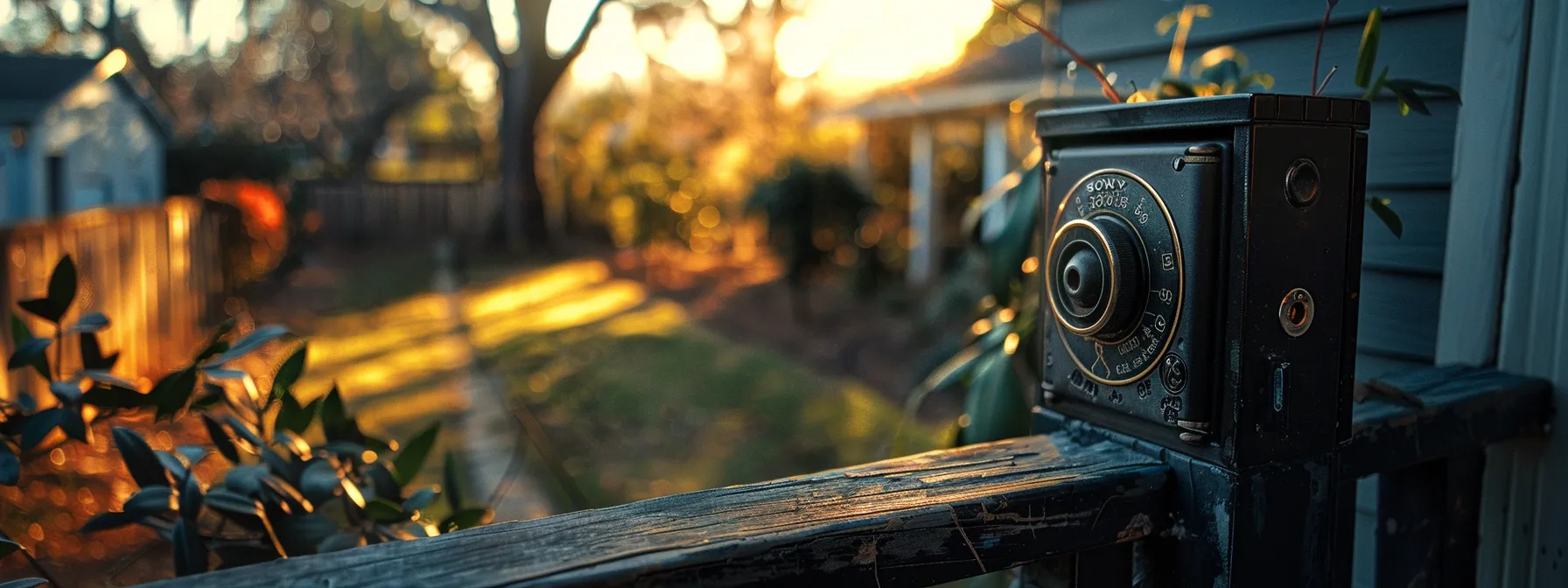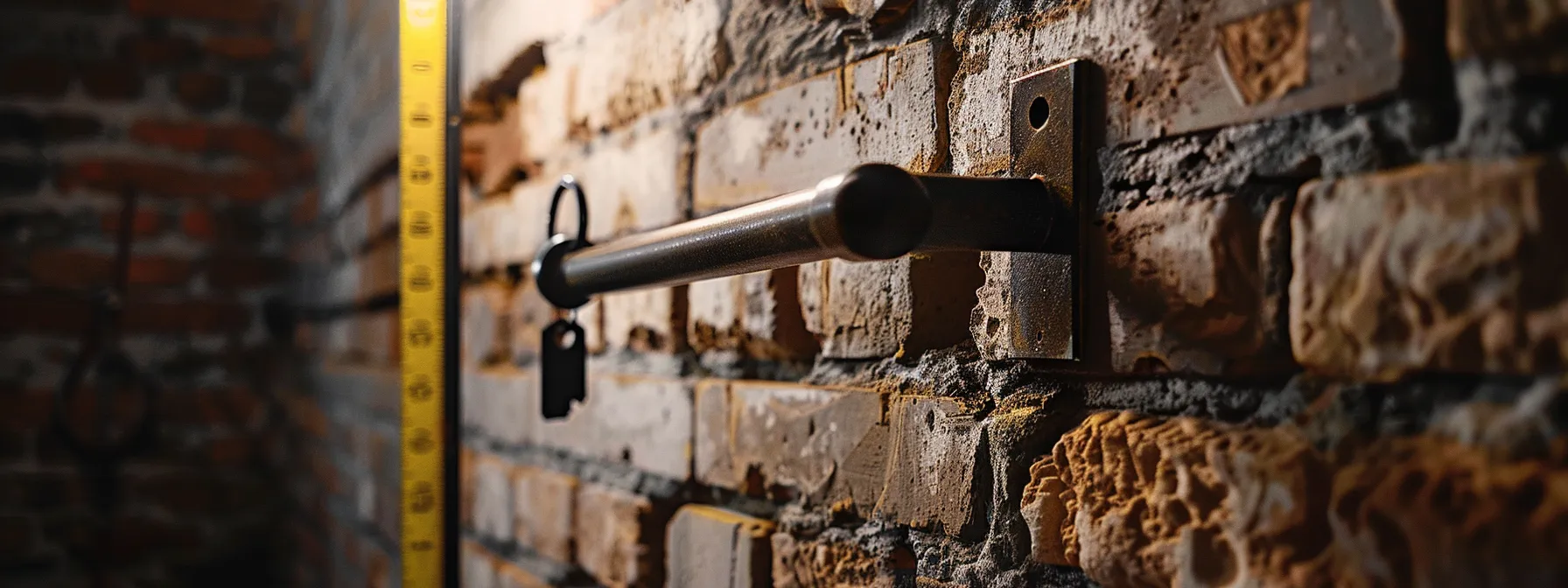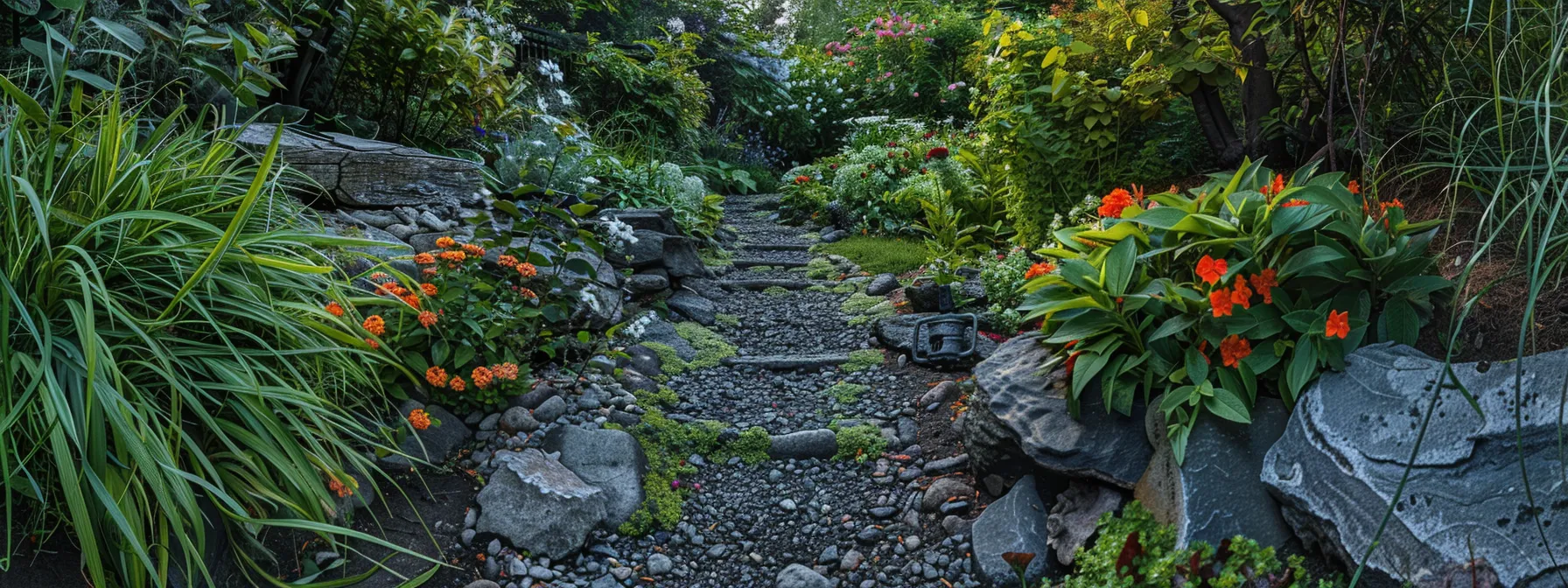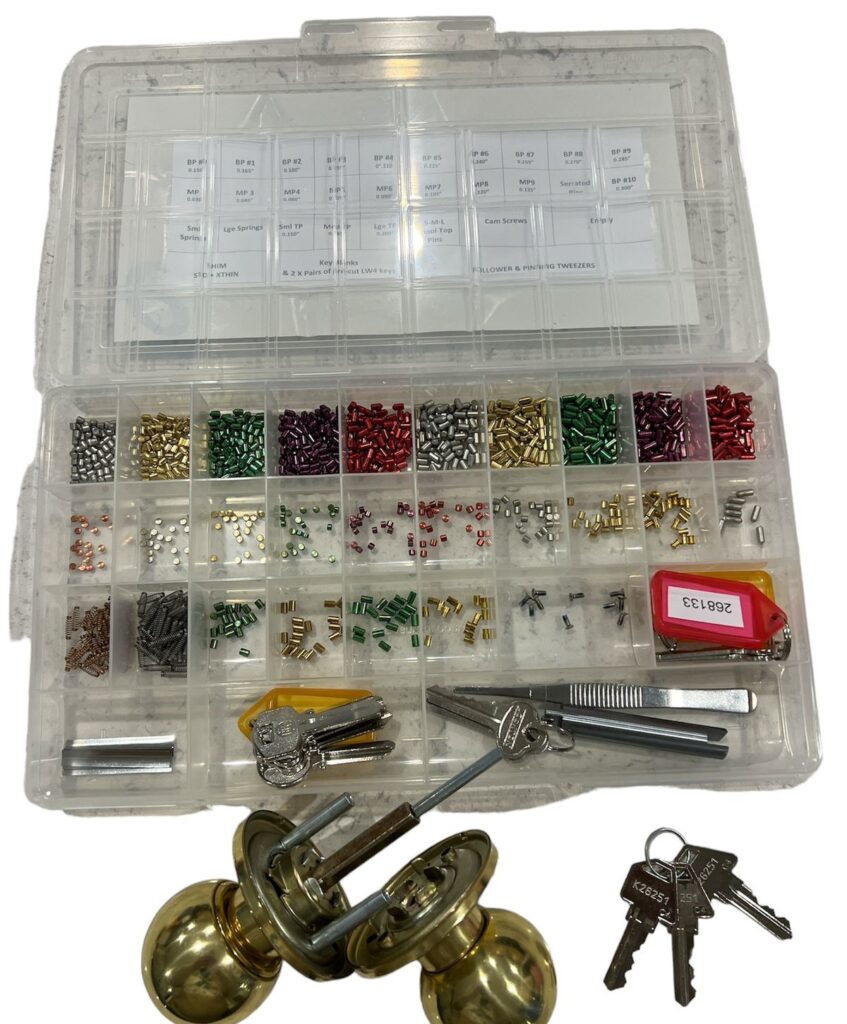Choosing the right location for a keypad key safe is essential for securing access to your property. Many Airbnb hosts often underestimate the risks associated with poor placement, leading to potential security breaches. This guide will cover the importance of strategic key safe placement, the factors to consider for optimal access control, and best practices for installation. By understanding these key elements, readers will gain insights on enhancing security while providing convenient access using combination locks. This information will help readers avoid common pitfalls and ensure their properties remain safe and secure.
Why Keysafe Placement Is Crucial for Security

keysafe placement plays a pivotal role in home security. Understanding the effectiveness of location can mitigate risks associated with poor placement. This section discusses how Unlock Master Locksmiths positioning, especially on porches or near home automation systems, enhances safety while remaining accessible during emergencies. Additionally, it addresses how thieves often exploit common locations, emphasizing the significance of using a combination lock for added security.
Understanding the Role of Location in Keysafe Effectiveness
Understanding the role of location in key safe effectiveness is essential for achieving optimal security. For instance, placing Unlock Master Locksmiths lockboxes near the door or wall can provide convenience for quick access during emergencies. However, common placements make it easier for thieves to locate them, underscoring the importance of selecting less obvious positions and considering using a metal key safe with a reliable locking mechanism to enhance protection against unauthorized access.
Risks Associated With Poor Keysafe Placement
Poor key safe placement can significantly compromise security, making homes vulnerable to unauthorized access. Common locations, such as under doormats or in easily visible areas, can be targeted by thieves who may use tools like an angle grinder to breach standard locks. Moreover, inadequate placement may impact home insurance coverage, as insurers often look for proper security measures when validating claims related to break-ins. To enhance protection, homeowners should consider utilizing smart locks and securing key safes with screws in less obvious locations. This not only deters potential intruders but also safeguards property and personal safety. For Emergency Locksmith Services, homeowners can reach out to reputable services like Unlock Master Locksmiths.
Enhancing Home Security Through Optimal Placement
Optimal placement of key storage can significantly enhance home security by reducing the risk of burglary. Landlords and homeowners alike should consider selecting Unlock Master Locksmiths in discreet locations that are less visible to potential intruders. Moreover, installing Car Lockout Service, durable materials for key storage solutions, resistant to corrosion, ensures they remain functional and secure over time, safeguarding both property and peace of mind.
- Secure locations mitigate risk of burglary.
- Discreet positioning enhances safety.
- Corrosion-resistant materials maintain key storage integrity.
- Landlords must prioritize security measures.
- Effective key placement protects property investments.
Balancing Accessibility and Safety for Keysafe Users
Balancing accessibility and safety for key safe users is essential in ensuring both quick access during emergencies and protection against unauthorized entry. Placing key safes in well-thought-out locations, such as within a secure steel enclosure mounted on brick surfaces, enhances security while remaining accessible. Moreover, choosing products that are secured by design, especially those that can withstand drilling or tampering, provides an additional layer of safety, justifying the investment in quality key storage solutions for both homeowners and renters alike.
How Thieves Exploit Common Keysafe Locations
Thieves often target common key safe locations due to their predictability, which significantly increases the risk of theft. For example, areas like under doormats or easily accessible surfaces can be quickly identified and compromised, especially by those using tools to manipulate lockboxes. Homeowners are advised to reassess their key safe installation practices and consider integrating advanced security features, such as a mobile app for monitoring access, to help deter potential intruders:
- Common placements are easily identifiable by thieves.
- Lockboxes in visible areas can lead to theft.
- Advanced security features can enhance protection.
Choosing the right spot for a key safe isn’t just a matter of convenience; it’s about safety. Next, let’s explore the key factors that make a key safe location secure and effective.
Key Factors to Consider When Choosing a Keysafe Spot

Assessing visibility is crucial when choosing a keysafe spot, with concealed locations offering greater security than obvious ones. Furthermore, evaluating ease of access for authorized persons ensures security without compromising convenience. Environmental influences can impact keysafe durability, while legal considerations must be compliant with regulations. Finally, proximity to entry points and security systems can enhance overall safety, making these factors essential for effective keysafe placement.
Assessing Visibility: Concealed vs. Obvious Locations
When assessing visibility for a key safe location, it is essential to prioritize concealed placements over obvious ones. Concealed installations not only reduce the likelihood of detection by potential thieves but also enhance overall security. Utilizing professional Mobile Locksmith Services can provide insights on effective placement strategies, ensuring key safes remain discreet yet accessible during emergencies. Additionally, business owners facing lockout situations can benefit from Business Lockout Solutions that advise on optimal key safe positioning to prevent unauthorized access while maintaining quick availability for authorized personnel.
Evaluating Ease of Access for Authorized Persons
Evaluating ease of access for authorized persons is crucial when determining the best keysafe location. Placement should allow quick retrieval of keys during emergencies while maintaining security from potential intruders. For instance, situating a keysafe near a main entry point but out of sight can provide both accessibility for trusted individuals and protection against theft.
- Ensure quick retrieval of keys during emergencies.
- Maintain security by placing safes out of sight.
- Consider proximity to main entry points for ease of access.
Environmental Influences on Keysafe Durability
Environmental factors significantly influence the durability of keysafes, making it important to consider the elements when selecting a location. For instance, exposure to harsh weather conditions such as heavy rain, extreme temperatures, or intense sunlight can deteriorate the materials of a keysafe over time. Choosing a sheltered spot, away from direct exposure, ensures that the keysafe remains functional and effective, thereby prolonging its lifespan and maintaining security.
Legal Considerations and Compliance With Regulations
When selecting a keysafe location, consideration of legal regulations is necessary to ensure compliance. Local codes and homeowners’ association guidelines may specify certain requirements for key safes, including their placement and visibility. Failure to adhere to these regulations can result in penalties or compromise insurance claims, making it essential for property owners to research and understand relevant legal constraints before installation.
Proximity to Entry Points and Security Systems
When selecting a location for a key safe, proximity to entry points and existing security systems is essential for optimizing accessibility and enhancing security. Placing a key safe near primary entrances allows trusted individuals to quickly access keys during emergencies without compromising security, especially when bolstered by alarms or cameras already in place. By ensuring that the key safe is correlated with these security measures, property owners can create a cohesive defense strategy, safeguarding against unauthorized access while providing convenient access for authorized users.
The right spot for a keysafe can shape security. Next, discover best practices for placing it securely and effectively.
Secure Keysafe Placement Advice: Best Practices

To ensure optimal security for key safes, homeowners should avoid predictable and easily found spots. Effective concealment techniques, such as incorporating natural and architectural features, enhance safety. Additionally, utilizing technology can bolster discreet installations. Regularly reviewing and updating key safe locations is essential for adapting to changing environments and maintaining security. The following sections provide practical insights on these best practices.
Avoiding Predictable and Easily Found Spots
Homeowners must prioritize avoiding predictable and easily found spots when selecting a location for their keysafe. Common placements, such as under doormats or potted plants, can be quickly discovered by thieves, increasing the risk of unauthorized access. By opting for less conspicuous areas, such as hidden behind a secure fence or within a garden shed, they can significantly enhance the security of their property and maintain peace of mind.
Tips for Concealing Your Keysafe Effectively
Concealing a keysafe effectively requires strategic placement that avoids obvious locations. Homeowners can enhance security by utilizing less conspicuous areas, such as placing the keysafe behind outdoor fixtures or in a sheltered garden spot, making it harder for intruders to identify. Selecting a durable, camouflaged keysafe design can further obscure its presence, ensuring that it blends seamlessly with the surroundings, thereby safeguarding access from unwanted attention.
Incorporating Natural and Architectural Features
Incorporating natural and architectural features into keysafe placement can significantly enhance security while maintaining aesthetics. For instance, positioning a keysafe near dense shrubbery or behind a decorative element, such as a garden statue, can effectively conceal it from plain sight yet keep it accessible for authorized users. Homeowners are encouraged to assess their property’s landscape and architectural design, ensuring the placement harmonizes with surroundings to deter potential intruders while ensuring quick retrieval when needed.
Using Technology to Enhance Concealment
Using technology effectively enhances the concealment of key safes, providing an additional layer of security. Homeowners can leverage smart key safes that offer features such as monitoring through mobile apps, allowing them to track access in real time. Integrating these advanced systems with home security cameras or alarms can further discourage unauthorized access by alerting homeowners to suspicious activity, creating a robust security framework around the key safe.
- Utilize smart key safes with mobile app monitoring.
- Integrate with home security systems for enhanced protection.
- Track access and receive alerts for suspicious activity.
Regularly Reviewing and Updating Your Keysafe Location
Regularly reviewing and updating the key safe location is crucial for maintaining optimal security. Environmental changes, such as landscaping alterations or new construction nearby, may affect the visibility and accessibility of the key safe, making it necessary to reassess its position. Ensuring that the key safe remains discreet and secure not only deters potential intruders but also provides peace of mind for homeowners and renters alike.
With the right placement set, the next step awaits. Installing your keysafe securely ensures your safety and peace of mind; let’s get started.
Step-by-Step Guide to Installing Your Keysafe Securely

This section provides a comprehensive step-by-step guide to installing a key safe securely, covering essential topics such as preparing the installation site properly, gathering the necessary tools, and taking safety precautions. Detailed installation instructions for various surfaces will be outlined, followed by testing the key safe post-installation and setting up user access. Each of these steps ensures a secure and effective key safe placement for enhanced protection.
Preparing the Installation Site Properly
Preparing the installation site properly is vital for ensuring a secure keysafe placement. This involves selecting a strong surface, such as concrete or brick, and ensuring that the area is clear of debris or obstructions. Taking the time to measure and mark the spot accurately allows for efficient installation and helps prevent potential security weaknesses later on.
Tools Needed and Safety Precautions to Take
To successfully install a keysafe securely, specific tools are necessary to ensure the process is efficient and effective. Homeowners should gather a drill, appropriate drill bits for the chosen surface, a screwdriver, and a level to aid in proper alignment. Safety precautions, such as wearing protective eyewear and gloves, should be taken to prevent injury during installation, ensuring a safe environment while working with tools and materials.
Detailed Installation Instructions for Various Surfaces
Installing a keysafe securely on various surfaces requires attention to detail to ensure maximum effectiveness and durability. For concrete, use a hammer drill with appropriate masonry bits to create pilot holes before securing the keysafe with durable screws or bolts. When working with brick, it is crucial to drill into the mortar joints for increased stability, avoiding cracks in the brick itself. For wooden surfaces, pre-drilling holes can prevent splits, and using outdoor-rated screws ensures longevity against the elements. Each surface type demands specific installation techniques, and understanding these will significantly enhance both security and ease of access for authorized users.
Testing Your Keysafe After Installation
After installation, testing the key safe is a critical step to ensure its functionality and security. Homeowners should check that the locking mechanism operates smoothly and the key retrieval process is straightforward. Conducting this test not only provides peace of mind but also confirms that the key safe is positioned securely in its optimal location, effectively balancing accessibility for trusted users while safeguarding against potential unauthorized access.
Setting Up User Access and Informing Trusted Individuals
Setting up user access for a keysafe is crucial for maintaining security while ensuring that trusted individuals can retrieve keys quickly when needed. Homeowners should select a simple yet secure process for sharing access codes or keys with family members or close friends, ensuring that they understand the importance of keeping this information confidential. Informing trusted individuals about the keysafe’s location and access instructions can prevent potential confusion during emergencies, enhancing both safety and convenience.
Once the keysafe is securely installed, the next step is to find its perfect spot. Choosing the ideal location will enhance convenience and security, making your system even more effective.
Innovative Ideas for Optimal Keysafe Placement

Innovative ideas for optimal keysafe placement can significantly enhance security while ensuring quick access when needed. This section explores creative concealment solutions using everyday objects, integrating keysafes into landscaping elements, and disguising them with camouflage techniques. It also covers the advantages of installing keysafes in unconventional yet secure locations and the benefits of consulting professionals for custom placement options.
Creative Concealment Solutions Using Everyday Objects
Utilizing everyday objects for creative concealment of keysafes can significantly enhance security while ensuring accessibility. For example, placing a keysafe within a decorative rock or a hollowed-out planter can disguise it effectively, making it challenging for potential intruders to detect. By integrating keysafes into commonly overlooked items, homeowners can maintain quick access for authorized users while reducing the likelihood of unauthorized access.
Integrating Your Keysafe Into Landscaping Elements
Integrating a keysafe into landscaping elements offers a practical and secure solution for homeowners seeking to enhance security. For instance, positioning a keysafe within a decorative shrub or placing it under a garden feature can effectively conceal it from sight, while still allowing for easy access by trusted users. By blending the keysafe into the landscape, property owners not only increase the safety of their keys but also maintain the aesthetic appeal of their outdoor space.
Disguising Your Keysafe With Camouflage Techniques
Disguising a keysafe using camouflage techniques can significantly enhance security by making it less visible to potential intruders. Homeowners can consider integrating the keysafe into existing outdoor features, such as placing it within a decorative rock or embedding it in the landscape. By blending the keysafe with natural elements or common garden objects, property owners create a more secure environment while ensuring that trusted individuals can access it quickly when needed.
Installing Keysafe in Unconventional but Secure Locations
Installing a keysafe in unconventional but secure locations can greatly enhance security while remaining accessible to authorized users. For example, placing the keysafe inside a decorative birdhouse or within a locked storage shed can obscure its visibility, making it less attractive to potential thieves. This approach allows homeowners to integrate their key storage into their property‘s layout effectively, ensuring that the keys remain protected while still being reachable during emergencies:
- Utilize non-traditional items, like birdhouses, for concealment.
- Consider secured areas, such as storage sheds, for added security.
- Integrate with the landscape to obscure visibility from outsiders.
Consulting Professionals for Custom Placement Options
Engaging professionals for custom placement options proves to be a strategic decision for homeowners seeking optimal key safe installation. Experts can provide insights on the best locations that balance security and accessibility, ensuring that the keys remain concealed from intruders yet easily retrievable during emergencies. By leveraging their knowledge of security trends and environmental factors, professionals can assist in identifying discreet placements that align with both personal safety needs and property layout:
The best placement of a keysafe requires careful thought and consideration. Next, common questions about keysafe placement can help clear any doubts and guide the way forward.
Frequently Asked Questions About Keysafe Placement

Frequently Asked Questions About Keysafe Placement
This section addresses common queries regarding key safe placement, offering practical insights for homeowners. Key topics include the worst places to install a key safe, strategies to make it less noticeable, the necessity of professional installation, alternatives to physical keysafes, and recommendations for changing the key safe‘s location. Each aspect is vital to ensure enhanced security and accessibility while effectively safeguarding homes.
What Are the Worst Places to Install a Keysafe?
Some of the worst places to install a keysafe include common and easily identifiable locations such as under doormats, plant pots, or near entryways. These placements are predictable, making it simple for thieves to locate them, thus compromising security. Homeowners should strive to avoid these obvious spots and instead opt for concealed locations that provide better protection against unauthorized access, ensuring that their key safes remain secure and access-controlled.
How Can I Make My Keysafe Less Noticeable?
Making a keysafe less noticeable involves selecting discreet locations that are not easily visible to potential intruders. Homeowners can enhance the concealment of their keysafe by integrating it into landscaping elements or placing it behind objects that blend with the environment, such as decorative rocks or garden fixtures. Opting for a keysafe with a design that mimics common outdoor items can further obscure its presence, reducing the likelihood of unauthorized access while maintaining convenient retrieval for authorized users.
Is Professional Installation Necessary for Security?
Professional installation of a keysafe is often recommended for enhanced security, as experts can determine the most effective placement based on specific property layouts and security needs. Utilizing a qualified locksmith’s knowledge ensures that the keysafe is securely mounted in a discreet location, minimizing visibility to potential intruders. Moreover, professional installers are familiar with advanced locking mechanisms and installation techniques, which further fortify against unauthorized access, providing homeowners with peace of mind about their security measures.
Are There Alternatives to a Physical Keysafe?
Alternatives to a physical key safe include digital locks and smart home security systems that allow for keyless entry. These options often feature access codes or mobile app controls, providing secure entry without the need for traditional keys. Homeowners may find these solutions particularly beneficial as they enhance convenience while reducing the risks associated with physical key storage, such as loss or unauthorized access.
How Often Should I Change My Keysafe’s Location?
Homeowners should regularly reassess the location of their keysafe to ensure optimal security. It is advisable to change the keysafe’s placement at least once a year or whenever there are significant changes to the property‘s landscape or surroundings. For instance, if new construction occurs nearby or landscaping elements are modified, relocating the keysafe can help maintain its concealment from potential intruders while ensuring access remains convenient for authorized individuals.
Conclusion
Proper placement of a keysafe is crucial for safeguarding property and ensuring accessibility during emergencies. By strategically choosing less visible locations and employing durable, discreet designs, homeowners can significantly reduce the risk of unauthorized access. Regularly reviewing and updating the keysafe’s position based on environmental changes enhances security and peace of mind. Engage professionals for tailored solutions to achieve optimal placement, striking the perfect balance between safety and convenience.


